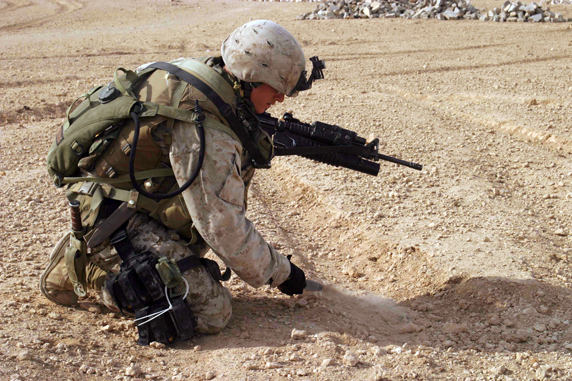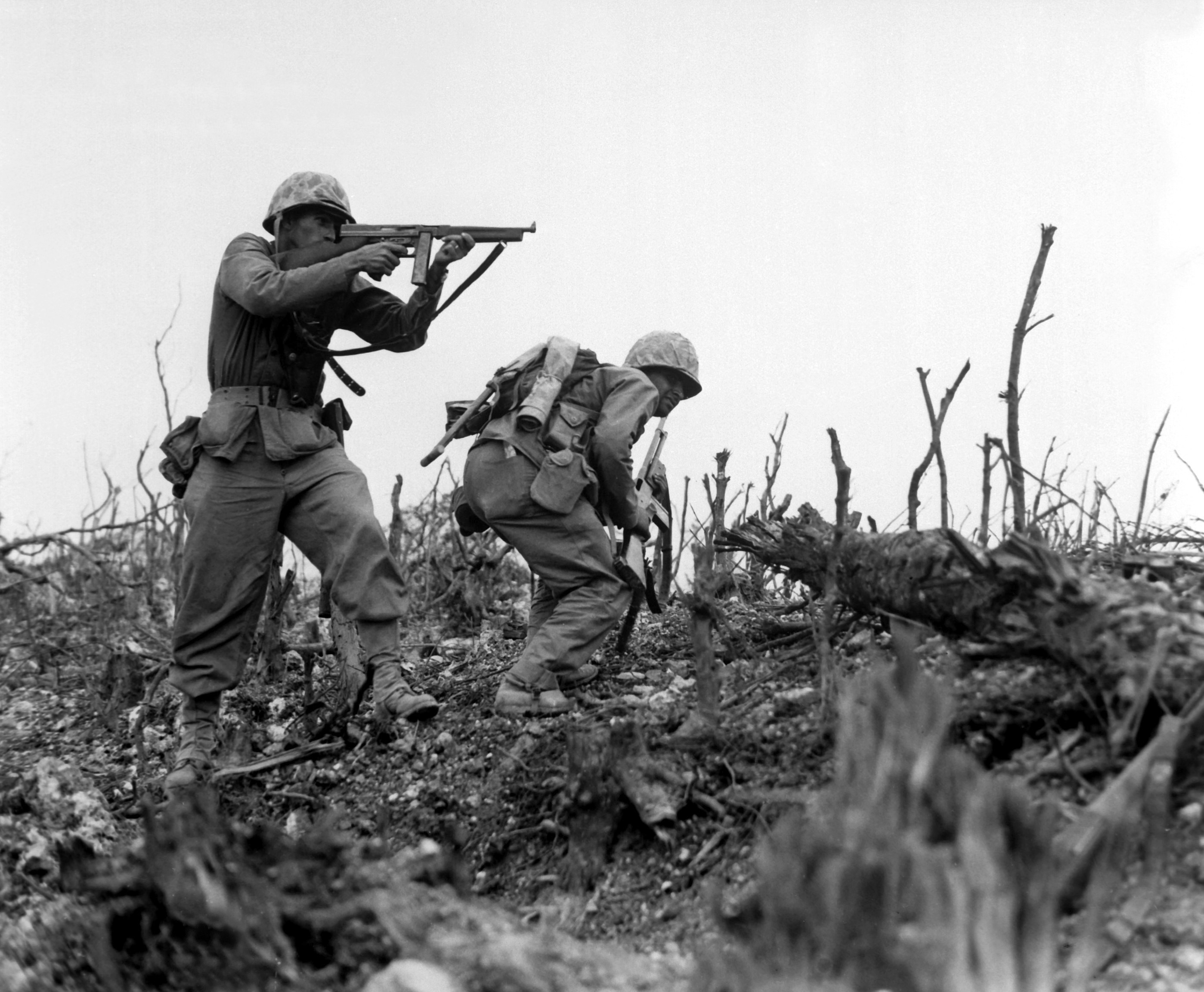British Empire and Commonwealth
Lee-Enfield
The Lee-Enfield was the main firearm used by the British Empire and Commonwealth, not just during World War II, but for the first half of the 20th century. It was a bolt-action, magazine-fed, repeating rifle that was first adopted in 1895 until 1957. The weapon is still in the service of some armed forces in Commonwealth of Nations, in particular with the Bangladesh Police, making it the longest-serving military bolt-action rifle still in official service.
Canadian rifleman during Battle of Ortona, December 1943. National Archives of Canada.
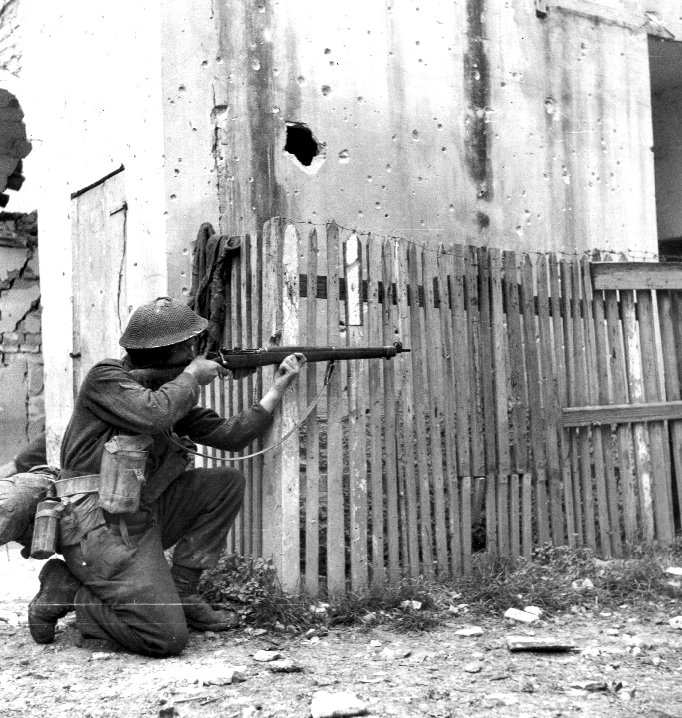
Bren Light Machine Gun
The Bren Light Machine Gun was another staple firearm for the armies of the British Empire and Commonwealth. It was issued on a scale of one rifle per section, and typically required two men to operate. The weapon could also be fired from the hip, which was a tactic employed by Australian troops. A Victoria Cross was awarded to Private Bruce Kingsbury who used that tactic at Isurava, New Guinea in 1942, during the Australians’ fighting retreat from Kokoda. The Bren was capable of firing 500–520 rounds/min, with an effective firing range of 600 yds. Every soldier was trained to be able to use the weapon in an emergency.
Bren gunner of the Royal Scots in the Netherlands, 1944. By Sergeant Laing, No 5 Army Film & Photographic Unit

Sten
The Sten was part of a family of submachine guns used throughout World War II and the Korean War. It had a simple design, which meant the gun had low production costs, and soon became a favorite for resistance groups. There were over four-million Stens made in the 1940s. However, the gun itself, especially the Mark II version, was unpopular with some front-line troops because of its poor reliability and strange appearance. It was nicknamed “Plumber’s Nightmare”, or ‘Stench Gun”.
Winston Churchill with a Sten Mk II in Shoeburyness on June 13th 1941. By Horton (Capt), War Office official photographer
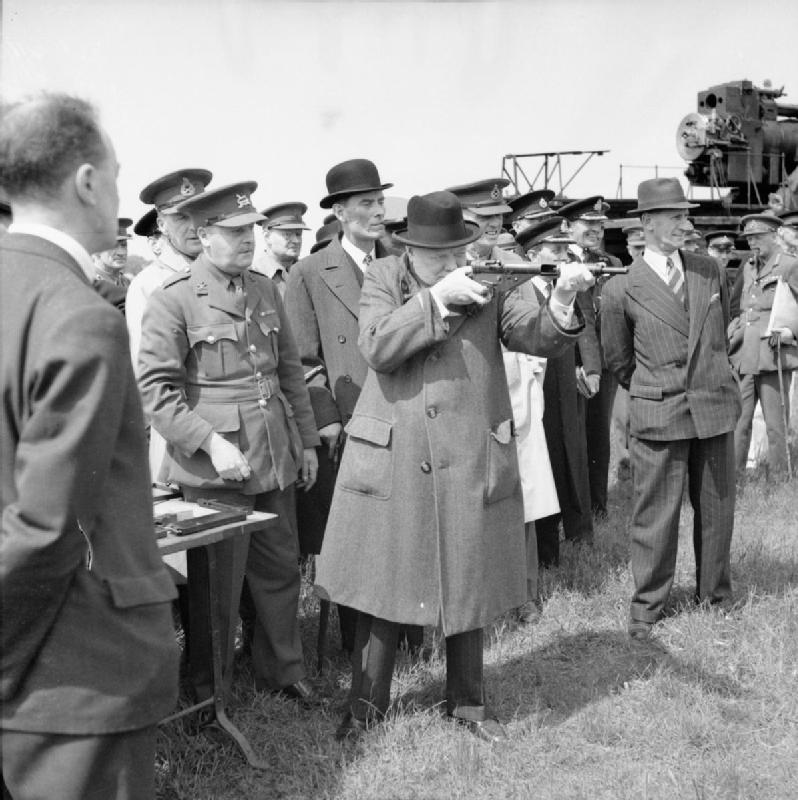
Mills Bomb
The first modern fragmentation grenade used by the British Army, over 70 million Mills bombs were produced until the end of their run in the 1980s. Someone with a good throwing arm could launch the grenade a distance of 15 meters; but troops were advised that the grenade had a danger area of around 100 yds. The Mills bomb first had a seven-second fuse, but during the Battle of France, this proved too long, allowing enemies to toss the grenade back, so was reduced to four seconds.
Mills bombs. From left to right: N°5, N°23, N°36. I, Jean-Louis Dubois [GFDL]
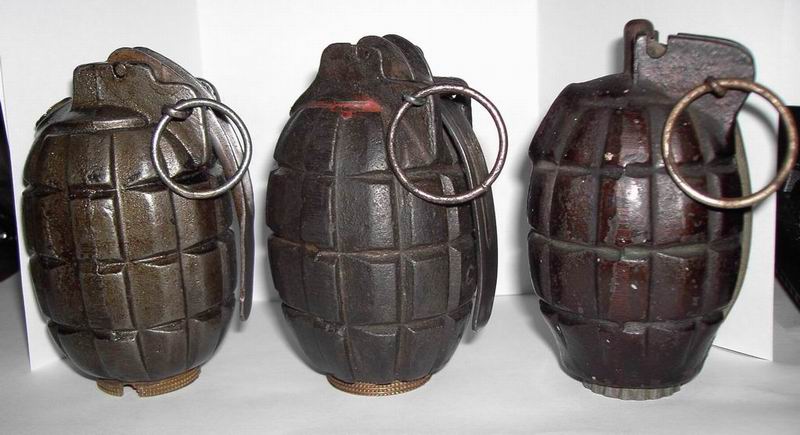
Fairbairn-Sykes Fighting Knife
The Fairbairn-Sykes fighting knife is a double-edged fighting knife that resembled a dagger or poignard with a foil grip. It was developed based on concepts of blades that the Shanghai Municipal Police in China used. The knife was made famous during World War II because of its use by British Commandos, the Airborne Forces, the SAS and many other units, especially during the Normandy Landings. Even today, the F-S knife is still used for hand-to-hand combat situations around the world.
Fairbairn-Sykes Fighting Knife. Greynurse at English Wikipedia

Soviet Union
Nagant M1895 Revolver
The Nagant M1895 Revolver is a seven-shot, gas-seal revolver that was designed and produced by Léon Nagant, a Belgian industrialist, for the Russian Empire. Leon and his brother Émile had previously worked on the Mosin-Nagant Model 189, one of the most produced bolt-action rifles in history. There were over 2,000,000 of the weapons made, and it was one of the only revolvers that could effectively use a suppressor.
A Nagant M1895 produced in 1941 by the Tula Arsenal with its 7.62×38mmR ammunition. Mascamon at lb.wikipedia
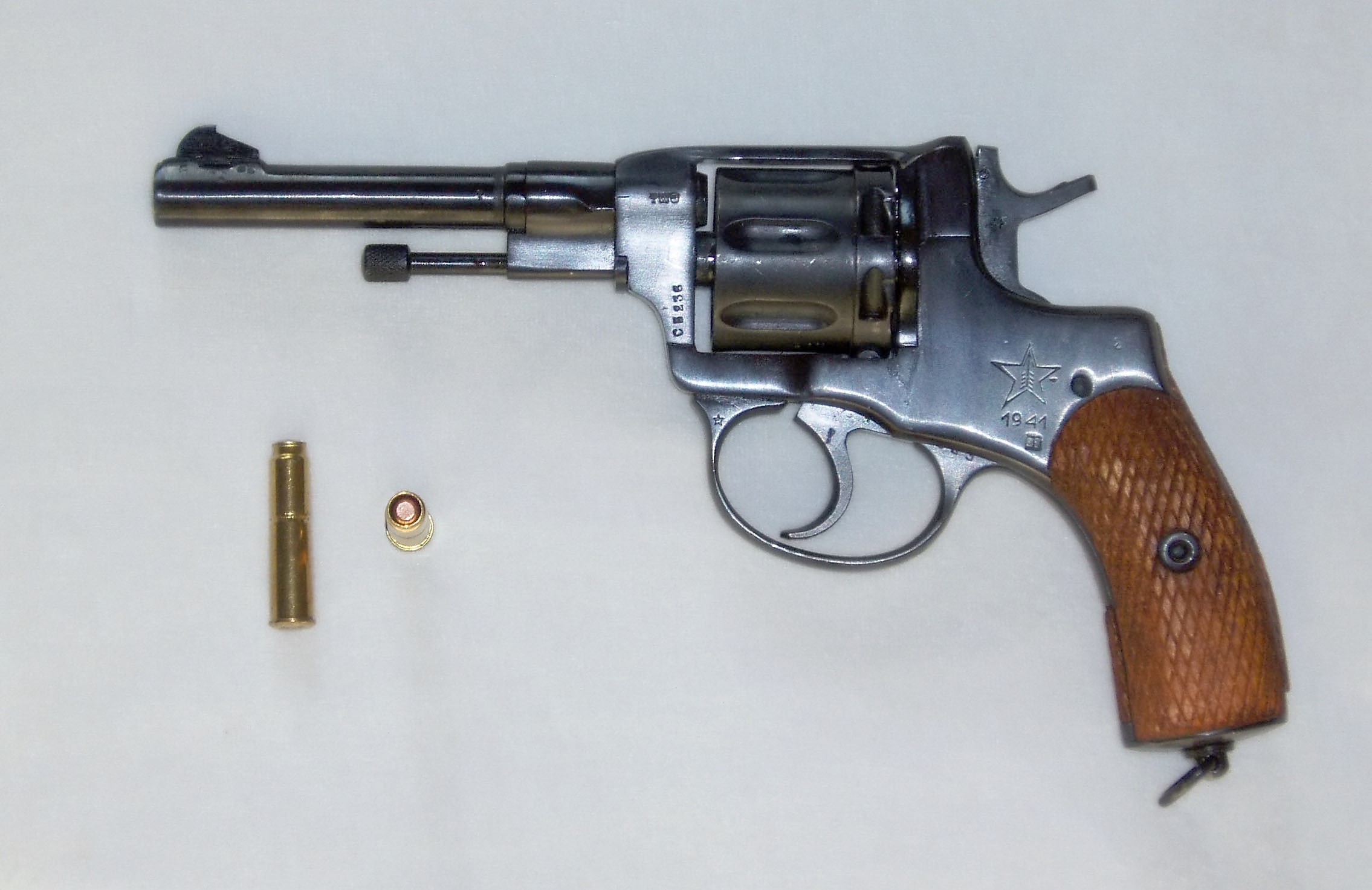
Mosin-Nagant
The Mosin-Nagant, as mentioned, was one of the most mass-produced military bolt-action rifles in history, with over 37,000,000 units produced. It was a 5 shot, bolt-action, internal magazine-fed, military rifle, which was developed by the Imperial Russian Army. Similar to the AK-47, it has been used in conflicts across the world.
Russian Imperial infantry of World War I armed with Mosin–Nagant rifles. George H. Mewes
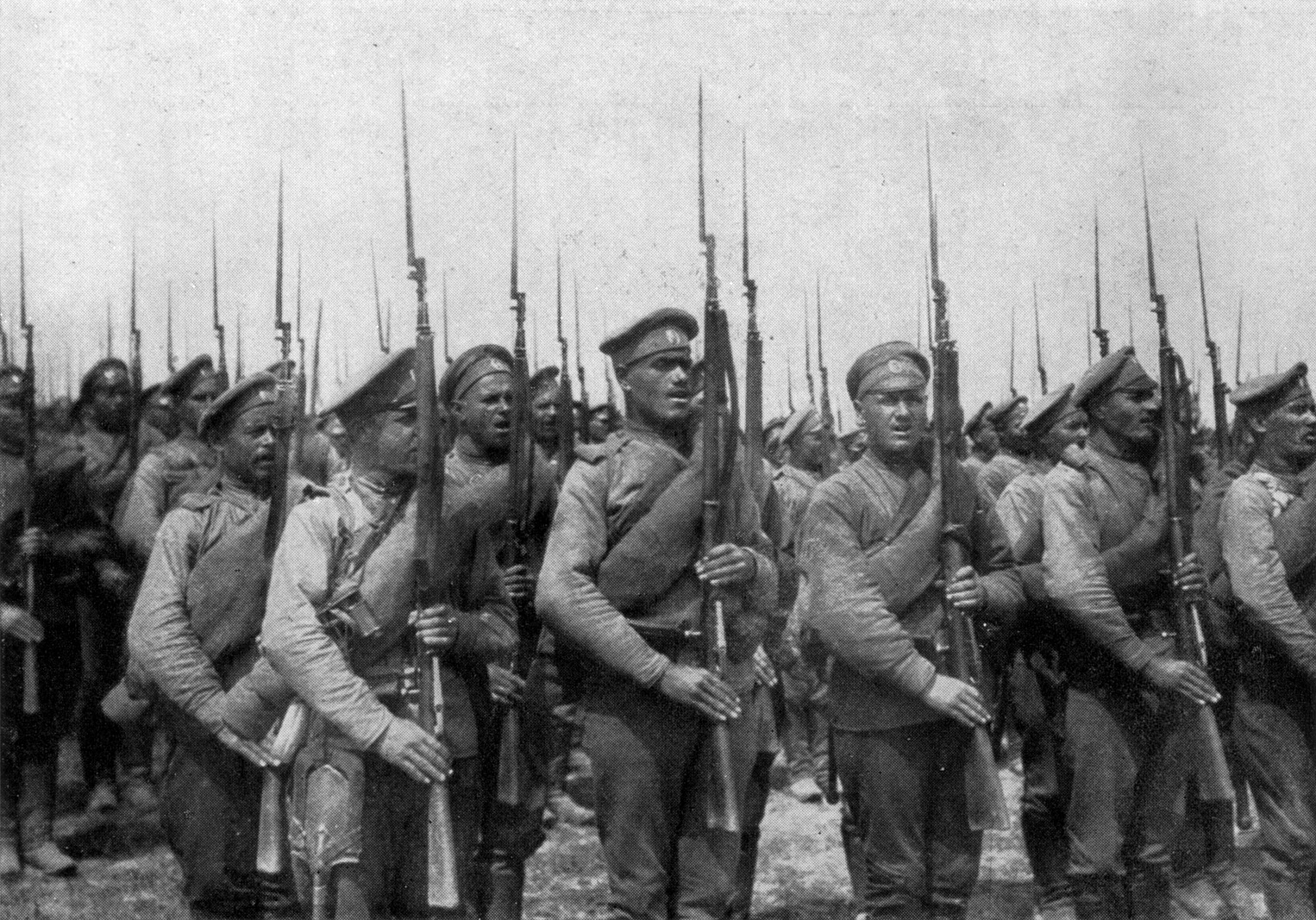
NR-40
The NR-40 was a combat knife introduced in 1940 and used in World War II. While other S-shaped knife guards were inverted, the NR-40 curved towards the edge of the blade. This was because standard Soviet Army grips were meant to be held with edge towards yourself, making it easier to sneak up on an enemy from behind. The knife was inspired by “Finnish knives” used in Russia’s criminal underworld throughout the first half of the 20th century.
Tank crew members, the "black knife" division. Note all-black NR-40s. By WWII archive
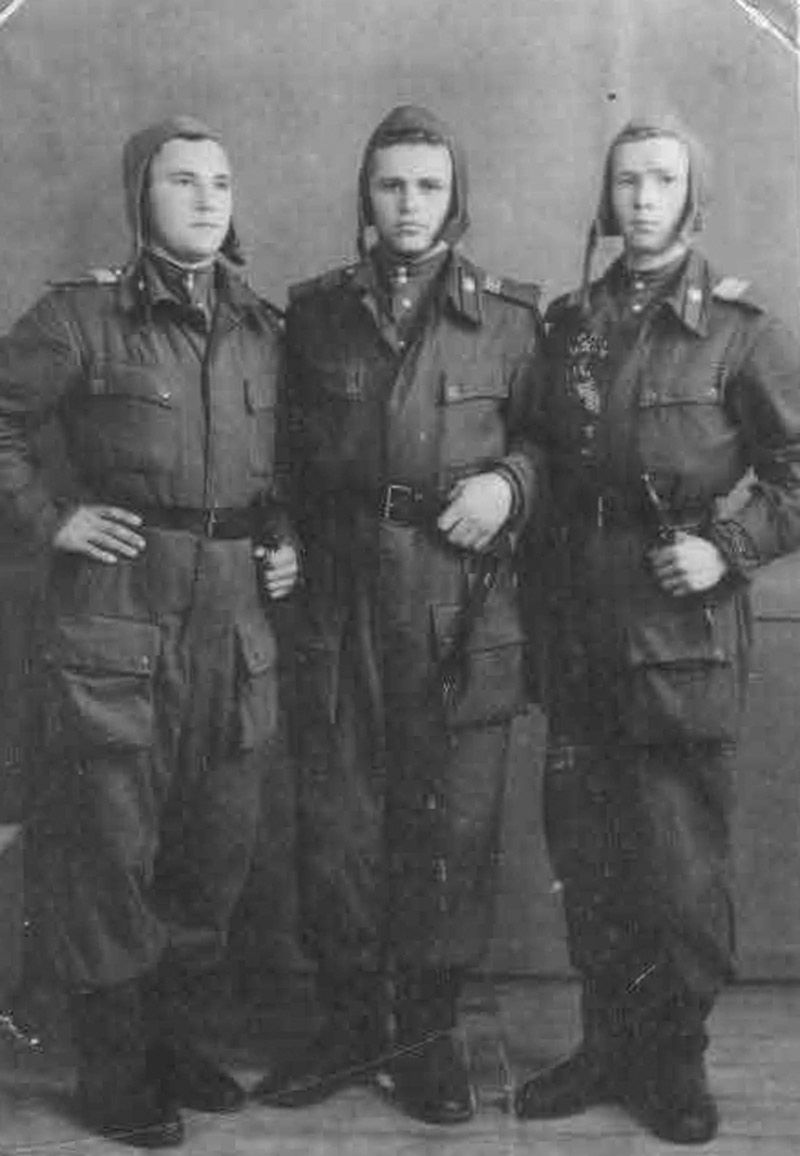
ROKS Flamethrowers
Both the ROKS-2 and ROKS-3 were portable flamethrowers. They were designed so as not to draw attention from the enemy, so the fuel tank was designed to be easy to conceal inside of a knapsack. Its fuel pipe was designed to resemble a rifle. The ROKS were used during the close-range skirmishes during the first days of the Battle of Kursk in 1943.
Captured Soviet ROKS-2 flamethrower. Photographed in Mikkeli Infantry museum. By MKFI
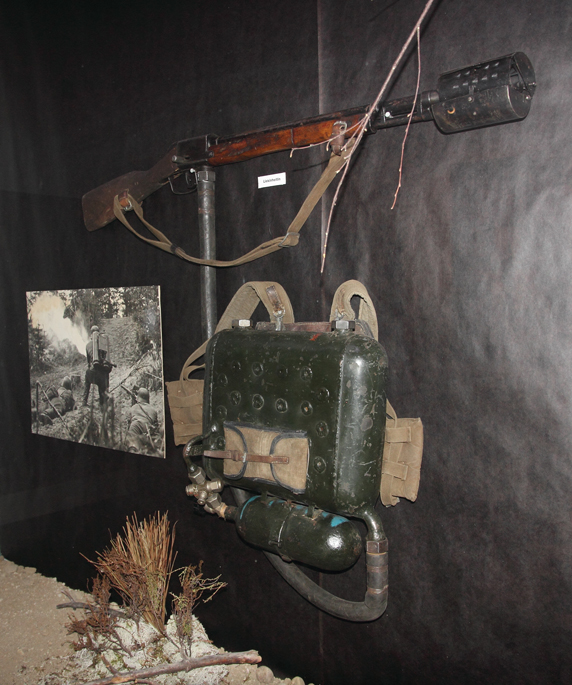
Bazooka
As part of the Lend-Lease program, Russian troops were supplied with bazookas, which was a man-portable weapon used for taking down tanks. Introduced in November 1942 as well as via the Russian front during Operation Torch, they were quickly sent to U.S. invasion forces who were landing in North Africa. However, the night before, Dwight D. Eisenhower discovered that none of his troops had received any instruction on how to use the bazooka.
A U.S. soldier fires an M9 bazooka at a German machine gun nest, Lucca 1944. By Department of Defense
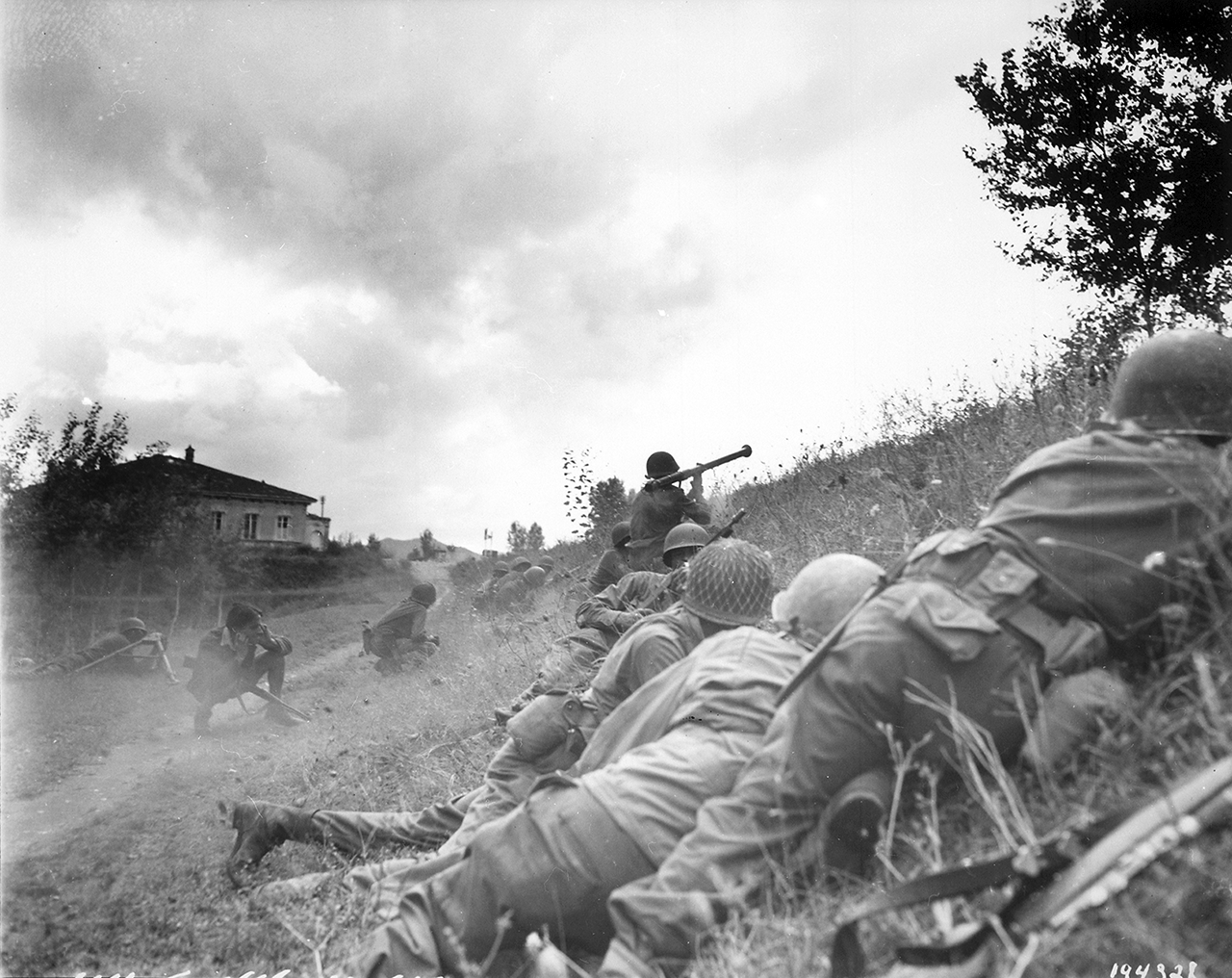
United States of America
M1911 Pistol
The M1911 was the standard-issue sidearm for the United States Armed Forces from 1911 to 1986. It was widely used in World War I and World War II, and there were around 2,700,000 of the M1911 and M1911A1 in military contracts during its service life. During World War II alone, there were 1,900,000 units produced. This many pistols meant that, after the war, cancelled all postwar contract for new production.
A Remington-made M1911A1 sidearm in August 2007. By M62
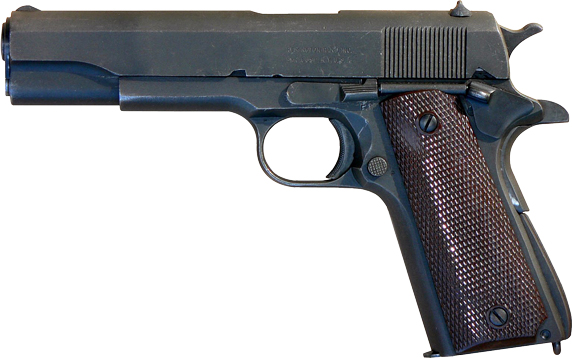
M1 Garand
The M1 Garand was the first standard-issue semi-automatic rifle, and General George S. Patton called it “the greatest battle implement ever devised”. In 1936, the Garand officially replaced the M1903 Springfield, becoming the standard service rifle of the United States Armed Forces. Use of the rifle in World War II gave U.S. forces a clear advantage over Axis forces because the former’s rifles were quicker than the latter’s.
U.S. Army Infantryman in 1942 with M1, Fort Knox, Kentucky. Alfred T. Palmer
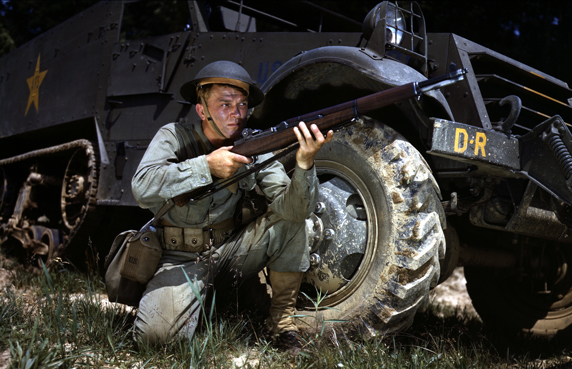
Thompson Submachine Gun
The Thompson became famous during the Prohibition era and was a favorite of soldiers, criminals, police and civilians because of its compactness, easy-loading cartridge, reliability, and rate of fire. In World War II, it served as a weapon for many units, like scouts and patrol leaders, performing raids on German positions. Its compact features made it useful in close fighting quarters and fighting in the streets.
A Marine fires on a Japanese position using an M1 Thompson submachine gun during an advance on Okinawa in 1945. By SSgt. Walter F. Kleine.Koalorka
Winchester Model 1897
The Winchester Model 1897 (also known as the “Trench Gun”) was a pump-action shotgun. Between 1897 and 1957, over million were made. A bayonet could be attached to the gun, and it was ideal for trench combat thanks to its considerable firepower and shorter barrel. Troops that were skilled in trap shooting were given the shotgun and stationed where they were able to fire at enemy grenades in mid-air.
Model 1897 (trench grade) and the reproduced Norinco (riot grade). By Rubyt38
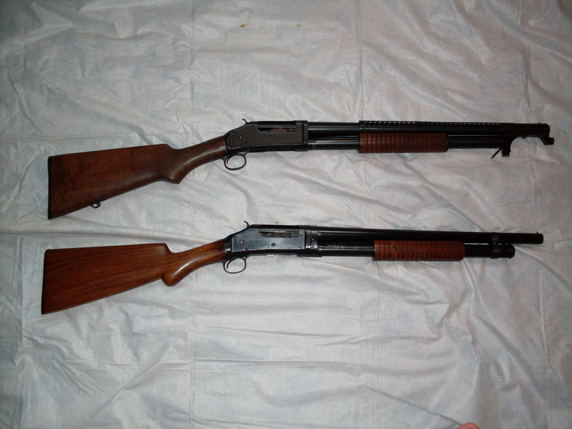
KA-BAR
The KA-BAR is the popular name for the combat knife first adopted by the United States Marine Corps in 1942. The owner of the trademark had begun using the name in 1923, after he received a testimonial from a fur trapper, who had used the knife to kill a wounded bear after his rifle jammed. When the United States had entered World War II, Army soldiers and Marines complained about older-issued knives. The War Department finally set out to find a new knife, eventually settling on the KA-BAR.
In USMC service in Iraq, 2005, still using the knife. By English: Cpl. Michael R. McMaugh, U.S. Marine Corps
